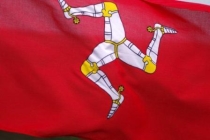Ballaharra Stones

Close to the village of St John's (Manx: Balley Keeill Eoin) in the Isle of Man (Mannin) is the Ballaharra Quarry owned by the Corlett family. During work at Ballharra in 1971 a Neothlic chambered tomb was uncovered. Over the next two years the site was excavated by a team led by Dr Sheila Cregeen of the Manx Museum (Thie Tashtee Vannin). It was to reveal one of the Island's ten Megalithic tombs which turned out to be the most important site on the Island for Neolithic pottery. The site yielded radio carbon dates circa 2,300 BC. A bronze age urn was also found.
Artefacts from the site are now in the custody of the Manx Museum. The surviving stone lintels, which originally sat above the large tomb, were donated by the Corlett family to German Parish Commissioners, who erected the stones in the village. They are set in a pleasant small park with flowers and benches not far and to the east from Bunscoill Ghaelgagh, the Manx-language primary school in St John's. They have now been arranged as a beautiful set of standing stones, which pay homage to the creators of the original tomb so many thousands of years ago.
Getting there
The Ballaharra Stones are located in the village of St. John's/Balley Keeill Eion near Peel/Purt ny h-Inshey on the west part of the island. They are located opposite St John's Church near Tynwald Hill.
- By car - St. John's is near Peel on the A1.
- By bus - Buses to the site go from Douglas, Peel and Ramsey.
Celtic nation:
- Isle of Man
Itinerary:
- Isle of Man - west of island
Place type:
- Ancient site









